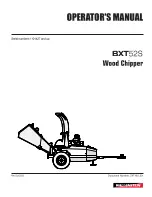
4
AGZ 025D through 190D
OMM 1166-1
Ambient Air Temperature
Limitations
Standard/High Ambient Panels
The maximum operating ambient temperature
for standard units is 104
F (40
C). AGZ-D
units for high ambient operation (105
F to
125
F maximum) require the addition of the
High Ambient Control Panel Option, which
includes the addition of a small fan with a
filter in the air intake to cool the control panel.
All units with the optional variable frequency
drive (VFD) low ambient fan control
automatically include the High Ambient
Control Panel Option. Operation of the VFD
generates a quantity of panel heat best
removed by use of a control panel fan.
Water Flow Limitations
The evaporator flow rates and pressure drops
shown on page 11 are for full load design
purposes in order to maintain proper unit
control. The maximum flow rate and pressure
drop are based on a 6 degree temperature drop.
Avoid higher flow rates with resulting lower
temperature drops to prevent potential control
problems resulting from very small control
bands and limited start up/shut off temperature
changes.
The minimum flow and pressure drop is
dependent on whether constant or variable
flow is employed in the chilled water system.
See 9 for details. Evaporator flow rates below
the minimum values can result in laminar flow
causing freeze-up problems, scaling and poor
control. Flow rates above the maximum values
will result in unacceptable pressure drops and
can cause excessive erosion, potentially
leading to failure.
Variable Speed Pumping
Variable water flow involves changing the
water flow through the evaporator as the load
changes. Daikin Applied chillers are designed
for this duty provided that the rate of change in
water flow is slow and the minimum and
maximum flow rates for the vessel are not
exceeded.
The recommended maximum change in water
flow is 10 percent of the change per minute.
When units are operated with flow rates
less than nominal (see
Table 8 on page 11), the “Evap Delta T”
setpoint must be changed proportionally to
match the minimum operating flow rate. The
“Delta T” setting should be increased by the
same percentage as the flow reduction is from
the nominal rating in order to prevent short
cycling. This will require reevaluation of
“Cool LWT”, “Startup Delta T”, and “Stop
Delta T” settings as well
System Water Volume
Considerations
All chilled water systems need adequate time
to recognize a load change, respond to that
load change and stabilize without undesirable
short cycling of the compressors or loss of
temperature control. In air conditioning
systems, the potential for short cycling usually
exists when the building load falls below the
minimum chiller plant capacity or on close-
coupled systems with very small water
volumes.
Some of the things the designer should
consider when looking at water volume are the
minimum cooling load, the minimum chiller
plant capacity during the low load period and
the desired cycle time for the compressors.
Assuming that there are no sudden load
changes and that the chiller plant has
reasonable turndown, a rule of thumb of
“gallons of water volume equal to two to three
times the chilled water gpm flow rate” is often
used.
A properly designed storage tank should be
added if the system components do not provide
sufficient water volume.
Содержание AGZ 190D
Страница 12: ...12 AGZ 025D through 190D OMM 1166 1 Figure 2 Typical Field Control Wiring...
Страница 81: ......
Страница 82: ......
Страница 83: ......





































